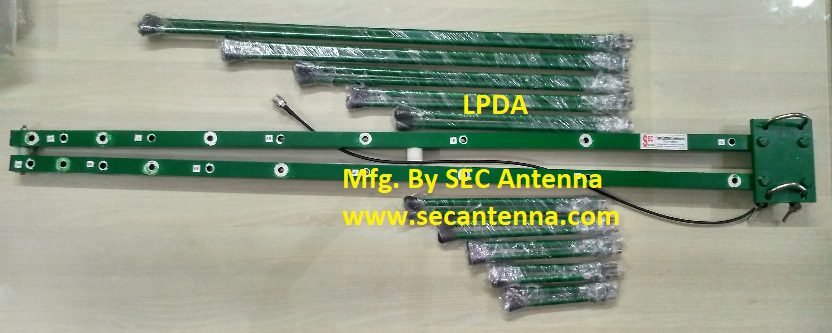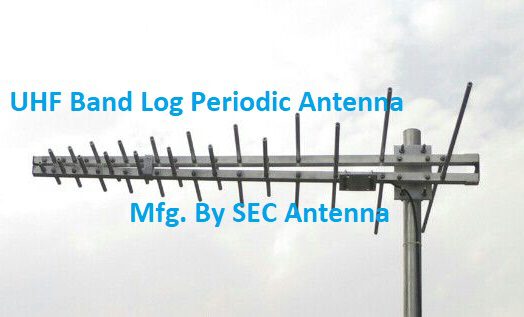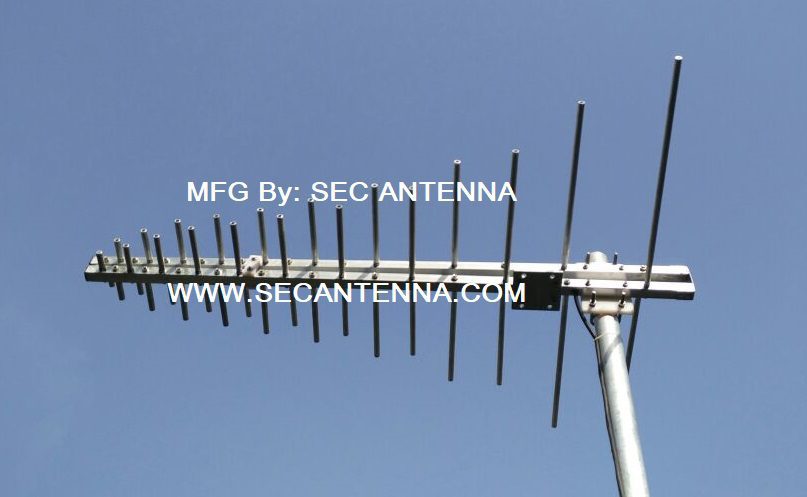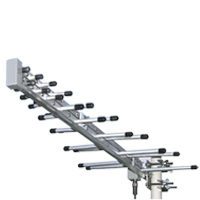Log Periodic Dipole Antenna (LPDA)
Smart Electronics Communication manufacture and provide Log Periodic Dipole Antenna (LPDA) series working under variable frequencies.

SLP Model Series
We manufacture Log Periodic Dipole Antenna (LPDA) from 20 MHz upto 3000 MHz frequency band. Our antenna design reflects innovative modern antenna construction.
To prevent corrosion we use high quality aluminium alloys in Log Periodic Dipole Antenna fabrication.
The military and intelligence communities face a difficult challenge – the need to monitor communications over a very wide frequency range without being detected. Present electronic surveillance systems employ multiple antennas that are either large or noisy. Our antenna systems provide passive antennas in compact, versatile form factors that provide extreme wideband performance.
Our SLP series designed to provide wideband directional signals from VHF through to the UHF bands. The Log Periodic Dipole Antennas are available from 20-3000MHz. frequency range. This Log Periodic Dipole Antennas system is particularly suitable for broadband purpose. All the assembling hardware of log periodic dipole antenna is made of stainless steel.
SMART ELECTRONICS COMMUNICATION would be pleased to supply Log Periodic Dipole Antenna with, customized connector, any specified paint colour or custom finish.
Our antennas are designed to provide the best gain figures, for the requirements of the band and for the specific application where the antenna will be used.




Unlocking the Potential: Log Periodic Dipole Antenna for Army
Introduction
In a world that relies heavily on seamless communication, the military forces are no exception. Ensuring that our armed services have access to reliable and efficient communication tools is paramount. One such tool that plays a pivotal role in enhancing military communication is the Log Periodic Dipole Antenna (LPDA). In this article, we’ll explore the features, benefits, and applications of LPDAs for the army.
What is a Log Periodic Dipole Antenna?
A Log Periodic Dipole Antenna is a specialized type of antenna designed to operate over a wide range of frequencies. Unlike traditional antennas that are optimized for a single frequency, LPDAs are versatile and can cover multiple frequency bands effectively. This unique characteristic makes them ideal for military applications where adaptability and versatility are crucial.
Key Features of LPDAs
Broad Frequency Coverage
LPDAs are engineered to provide coverage across a wide spectrum of frequencies. This feature is particularly advantageous for the army as it allows them to communicate on various channels without the need for multiple antennas. This versatility ensures uninterrupted communication even in dynamic and rapidly changing operational environments.
Directional Gain
Another significant advantage of LPDAs is their directional gain. These antennas can focus their signal in a specific direction, thereby increasing the range and effectiveness of communication. This directional gain is invaluable in military scenarios where precision and long-distance communication are essential.
Compact Design
Despite their impressive capabilities, LPDAs are known for their relatively compact design. Their compactness makes them suitable for both fixed installations and mobile applications. The army can easily deploy LPDAs in various scenarios, from stationary base camps to tactical field operations.
Applications in the Military
Tactical Communication
LPDAs are extensively used in tactical communication systems employed by the army. Their ability to cover a broad range of frequencies ensures that soldiers can stay connected in different operational theaters. Whether it’s voice communication or data transmission, LPDAs provide a reliable means of staying in touch.
Surveillance and Reconnaissance
In military surveillance and reconnaissance operations, the ability to transmit and receive data swiftly is critical. LPDAs excel in this regard, allowing real-time data exchange between remote sensors, drones, and command centers. This amplifies the understanding of the situation and facilitates the process of reaching well-informed judgments.
Electronic Warfare
LPDAs are also integral to electronic warfare systems. Their directional gain can be utilized to intercept and jam enemy communication signals while maintaining secure communication channels for friendly forces. This electronic countermeasure capability is vital for gaining a tactical advantage on the battlefield.
Conclusion
In the ever-evolving landscape of military technology, the Log Periodic Dipole Antenna stands out as a versatile and indispensable tool. Its ability to adapt to various frequencies, provide directional gain, and maintain a compact form factor makes it a valuable asset for the army. LPDAs play a crucial role in enhancing communication, surveillance, and electronic warfare capabilities, ultimately contributing to the safety and success of our armed forces on the battlefield.



